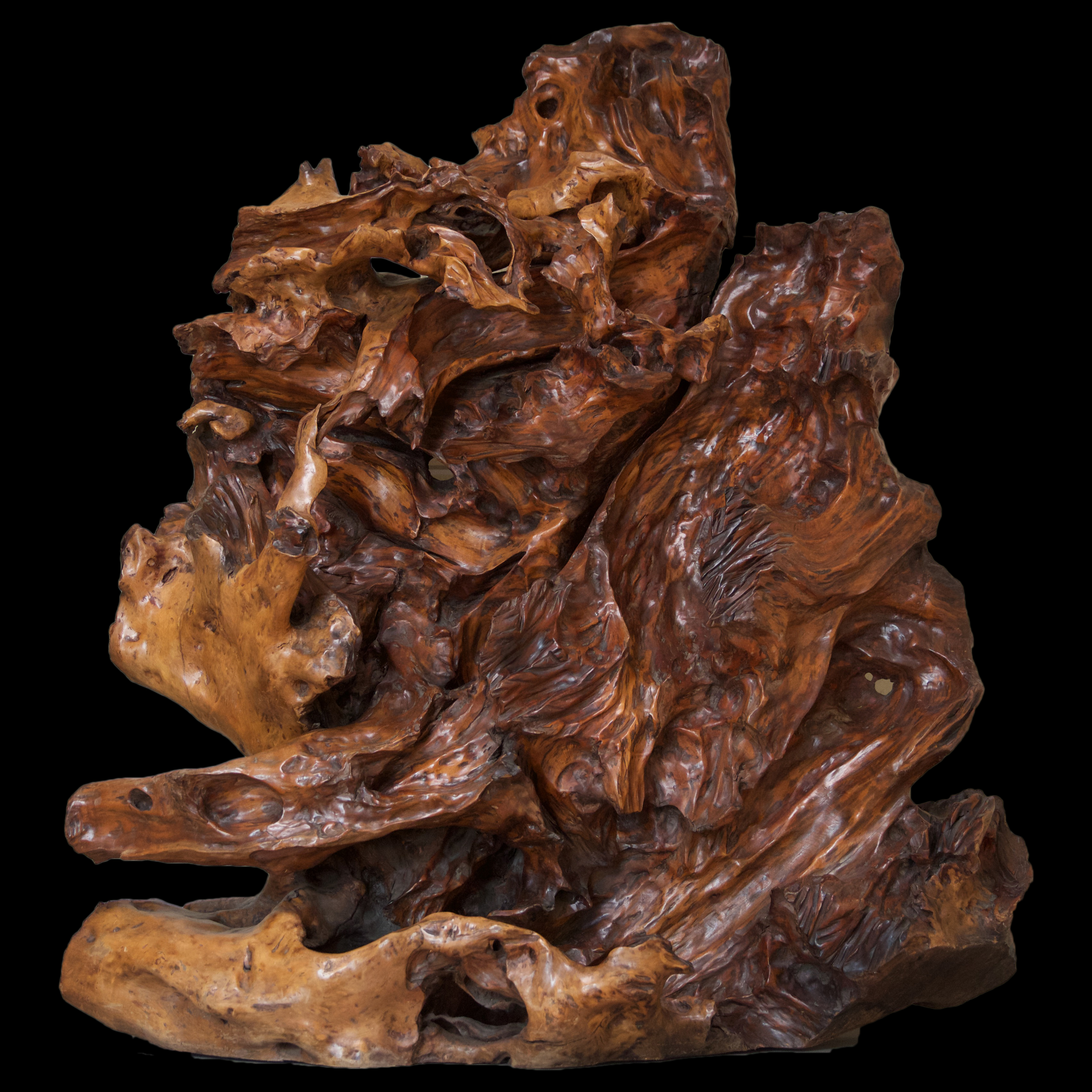
Sycamore tree root (Ficus Sycomorus)
Natural artifact
20th century, Wood
The natural artifact was made from the roots of the sycamore tree (Ficus sycomorus). It is believed to be one of the few trees native to Egypt where it was widely cultivated, so much so that Plinio, in the Naturalis Historiae, calls it Ficus ægyptia. In hieroglyphics, the symbol of the tree is represented precisely by the sycamore. The sycamore belongs to the botanical family Moraceae, and is capable of reaching 20 meters in height and 6 meters in diameter. It is geographically distributed in a disjunct areal manner from Africa to the Middle East: it is found in Egypt, Syria and Palestine, in the southern Arabian Peninsula and sub-Saharan Africa, and is found from the Pacific to the Atlantic and in the Horn of Africa. The leaves, similar to those of the fig, though not lobed, are oval in shape with a rounded apex. Unlike the common fig, the sycamore is an evergreen plant. The root, if treated properly, has a series of hollows and concavities that make the play of light and shadow extremely striking. The use of natural material and the absence of shapes or figures recalls the work in an informal setting.

